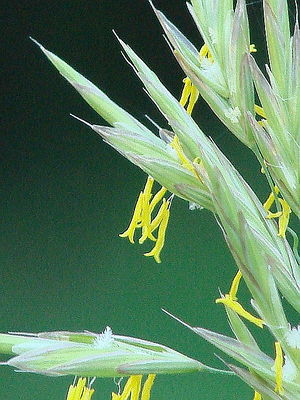Difference between revisions of "Bromus sitchensis var. carinatus"
m (Tag: VisualEditor) |
m (→References) (Tag: VisualEditor) |
||
| Line 5: | Line 5: | ||
* Codon: BROSIT | * Codon: BROSIT | ||
{{Taxobox | {{Taxobox | ||
| − | | name = Bromus carinatus| image = | + | | name = Bromus carinatus| image = BROSIT1.jpg |
| image_alt = Bromus carinatus | | image_alt = Bromus carinatus | ||
| − | | image_caption = | + | | image_caption = Photo by Craig Althen, 2015. Also featured on Main Page |
| regnum = [[Plant]]ae | | regnum = [[Plant]]ae | ||
| subregnum = Tracheobionta | | subregnum = Tracheobionta | ||
| Line 48: | Line 48: | ||
===Seed=== | ===Seed=== | ||
| − | [[File:Bromus caritanus.jpg|thumb | + | [[File:Bromus caritanus.jpg|thumb|250px|''Bromus carinatus,'' photo by Lisa Hintz]] |
| − | [[File:Bromus caritanus 2.jpg|thumb | + | [[File:Bromus caritanus 2.jpg|thumb|250px|''Bromus carinatus,'' photo by Lisa Hintz]] |
'''Seed sample from:''' 2008 | '''Seed sample from:''' 2008 | ||
| Line 73: | Line 73: | ||
==Photo Gallery== | ==Photo Gallery== | ||
<gallery> | <gallery> | ||
| − | + | File:BROSIT1.jpg|Photo: Craig Althen, 2015 | |
| + | File:BROSIT2.jpg|Photo: Craig Althen, 2015 | ||
| + | File:BROSIT3.jpg|Photo: Craig Althen, 2014 | ||
</gallery> | </gallery> | ||
==References== | ==References== | ||
Revision as of 20:43, 7 July 2020
- Latin Name: Bromus sitchensis var. carinatus
- Family: Poaceae
- Common Names: California brome
- Synonyms/Misapplications: Bromus carinatus, Ceratochloa carinata
- Codon: BROSIT
| Bromus carinatus | |
|---|---|

| |
| Photo by Craig Althen, 2015. Also featured on Main Page | |
| Scientific classification | |
| Kingdom: | Plantae |
| Subkingdom: | Tracheobionta |
| Phylum: | Spermatophyta |
| Subphylum: | Magnoliophyta |
| Class: | Monocots |
| Order: | Poales |
| Family: | Poaceae |
| Genus: | Bromus |
| Species: | B. carinatus |
Contents
Description
Perennial It is hardy to zone 0. The flowers are hermaphrodite (have both male and female organs) and are pollinated by Flies, bees, beetles. The plant is self-fertile. The plant prefers light (sandy), medium (loamy) and heavy (clay) soils and requires well-drained soil. The plant prefers acid, neutral and basic (alkaline) soils. It can grow in semi-shade (light woodland) or no shade. It requires moist soil.
Bloom Period
Distribution
N. America. N.E. Asia.
Habitat
Bog Garden; Cultivated Beds; Banks of streams, in swamps or on wet rocks, Labrador to Alaska and south to California[43].
Uses
Edible Parts: Leaves. Young leaves - raw or cooked[177]. The rosettes of the dark green shiny leaves are eaten raw or cooked[257]. A hot, cress-like flavor.
Propagation
We have very little information on this species and do not know if it will be hardy in Britain, though judging by its native range it should succeed outdoors in most parts of this country. The following notes are based on the general needs of the genus. Succeeds in sun or shade in a moist well-drained soil[200].
Seed - sow in situ in early spring to early summer.
Seed
Seed sample from: 2008
Average measurement: 14.6 x 1.5 x 1.5
Measurement range: L: 13.5 – 16 W: 1.1 – 1.8 D: 1.2 - 2
Features
Shape: Inner seed is about ½ the size of its husk, and brown.
Color:Seed husk tan, tending to be whiter toward hilium, and browner towards awn.
Surface:Hilium is somewhat glossy, while rest of husk is very hairy. Awn is brown and straight. Surface of seed longitudinally striate and glossy.
Latitudinal cross section: elliptical 
Longitudinal cross section: elliptical ![]()
Basic Explanations and Assumptions:
The dimensions for the seeds are length x width x depth. The location of the hilum is used as the base of the seed, and the length is measured from hilum to the opposite apex. Where a style is present, the length is measured from the hilum to the bottom of the style. Width is measured at a right angle to the length at the widest part. Depth is measured at a right angle to the intersection of height and width lines.
Measurements included are the mean average for each measurement of ten separate seeds.
All measurements in millimeters unless otherwise noted.





